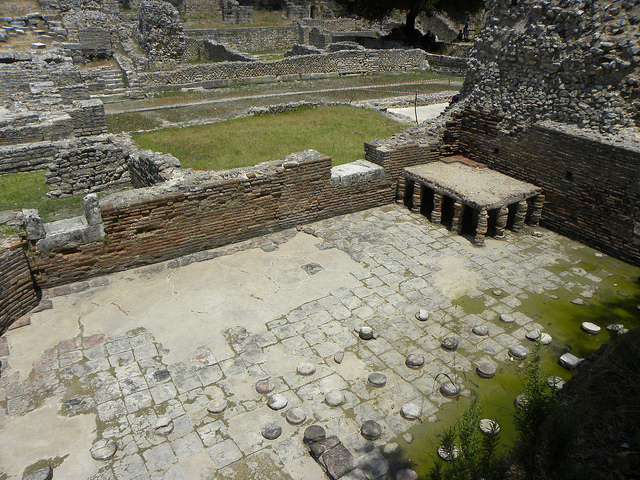See the ages of the past at Butrint.
- Butrint is a now ruined city that existed during the times of the Ancient Greeks and Romans, and the site is part of a protected area of approximately 86 square kilometres (33.2 square miles).
- ‘Butrint’ is also known as ‘Buthrotum’, ‘Bouthrōtón’ and ‘Buthrōtum’, the latter two being Greek and Latin respectively.
- Butrint is located on the southern tip of Albania, in Europe, in the area of Ksamil, on a hill, and the site is almost completely surrounded by water.
- The UNESCO World Heritage Convention declared Butrint a World Heritage Site in 1992, and a National Park of the same name was formed in the year 2000 to further protect the site.
- Butrint is said to have been settled by Greeks as early as the 900s BC, until it had a significant Roman influence by the mid 2nd century BC, and it was later influenced by Christians and Roman Catholics.

Part of Butrint
Image courtesy of Matias Hallberg/Flickr
- Butrint was the site of many clashes, especially during the Middle and Modern Ages, including those with Normans and Venetians.
- Butrint is said to have been hit by a damaging earthquake and flood, during the 200s AD and the medieval period respectively; while the latter disaster caused the occupants to cease living in the city, and never return.
- Archaeologists have performed modern excavations on Butrint since 1928, that were initially undertaken by Italians, and were intended by the Italian government to increase their influence in the area.
- Butrint has previously been damaged by theft and vandalism, and since protection of the site has been more prominent, further damage has diminished.
- Butrint has many monuments and other significant sights to see, and is visited by busloads of tourists quite regularly; while the first road to the archaeological site was built in 1959.
Bibliography:
Butrint, 2015, UNESCO World Heritage Convention, http://whc.unesco.org/en/list/570
Buthrotum, 2015, Wikipedia, http://en.wikipedia.org/wiki/Buthrotum
Butrint, nd, Butrint Foundation, http://butrint.com/index.php







interesting facts